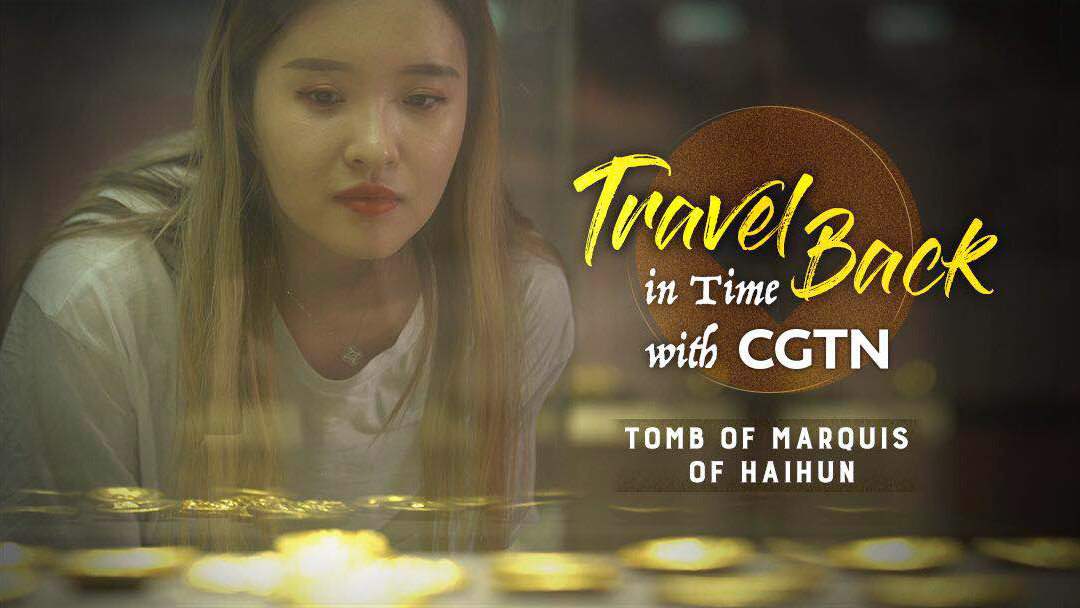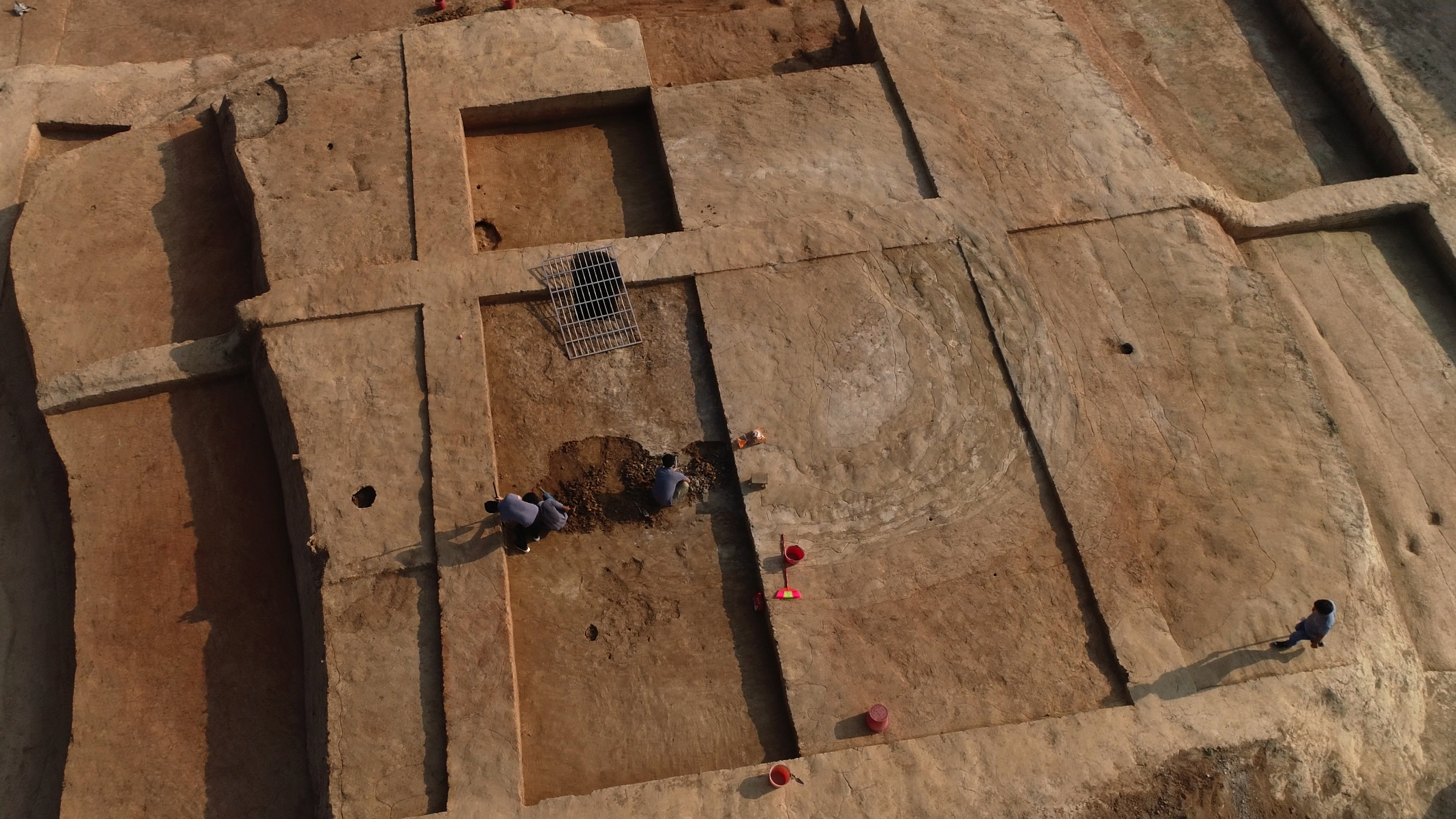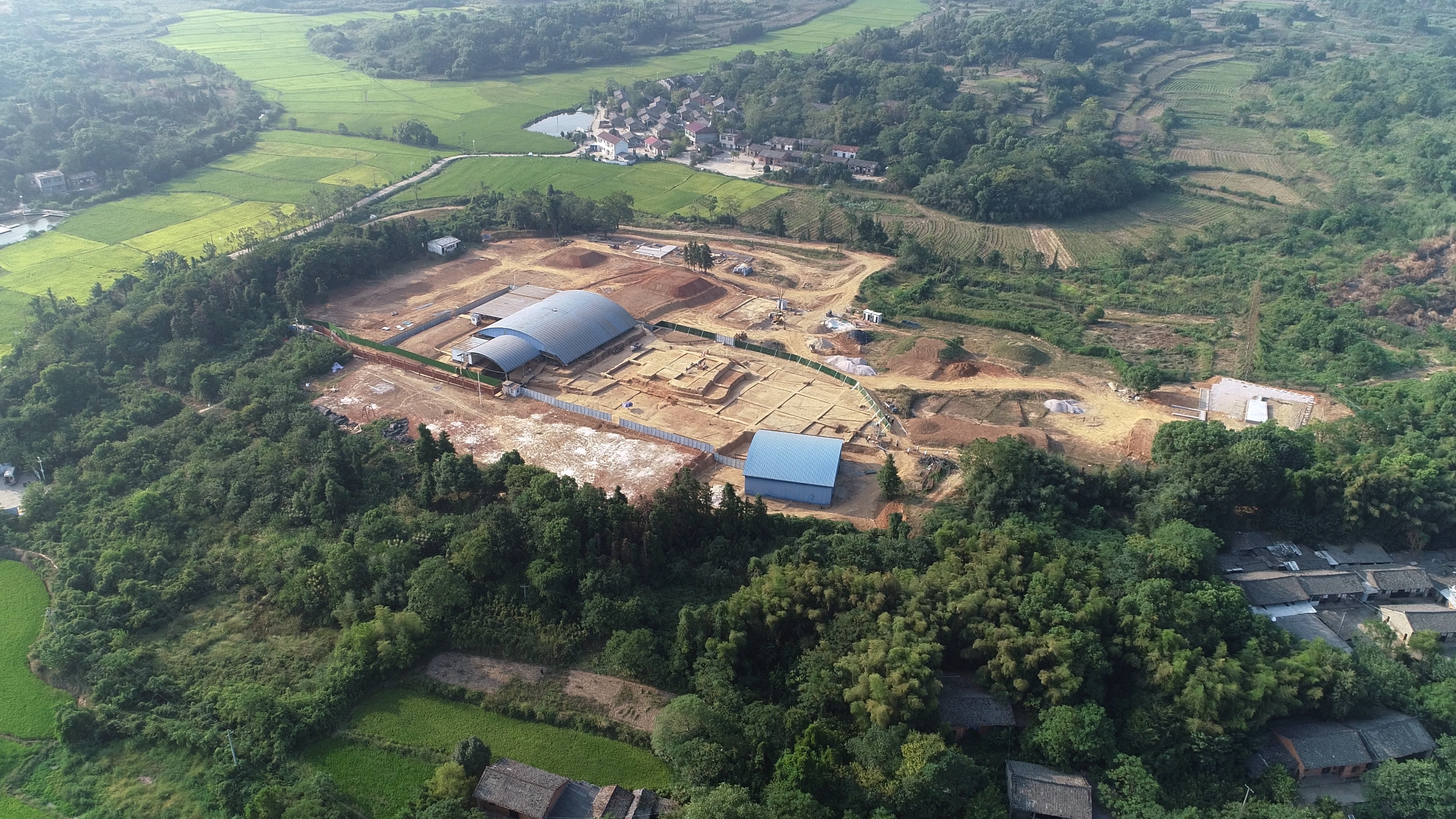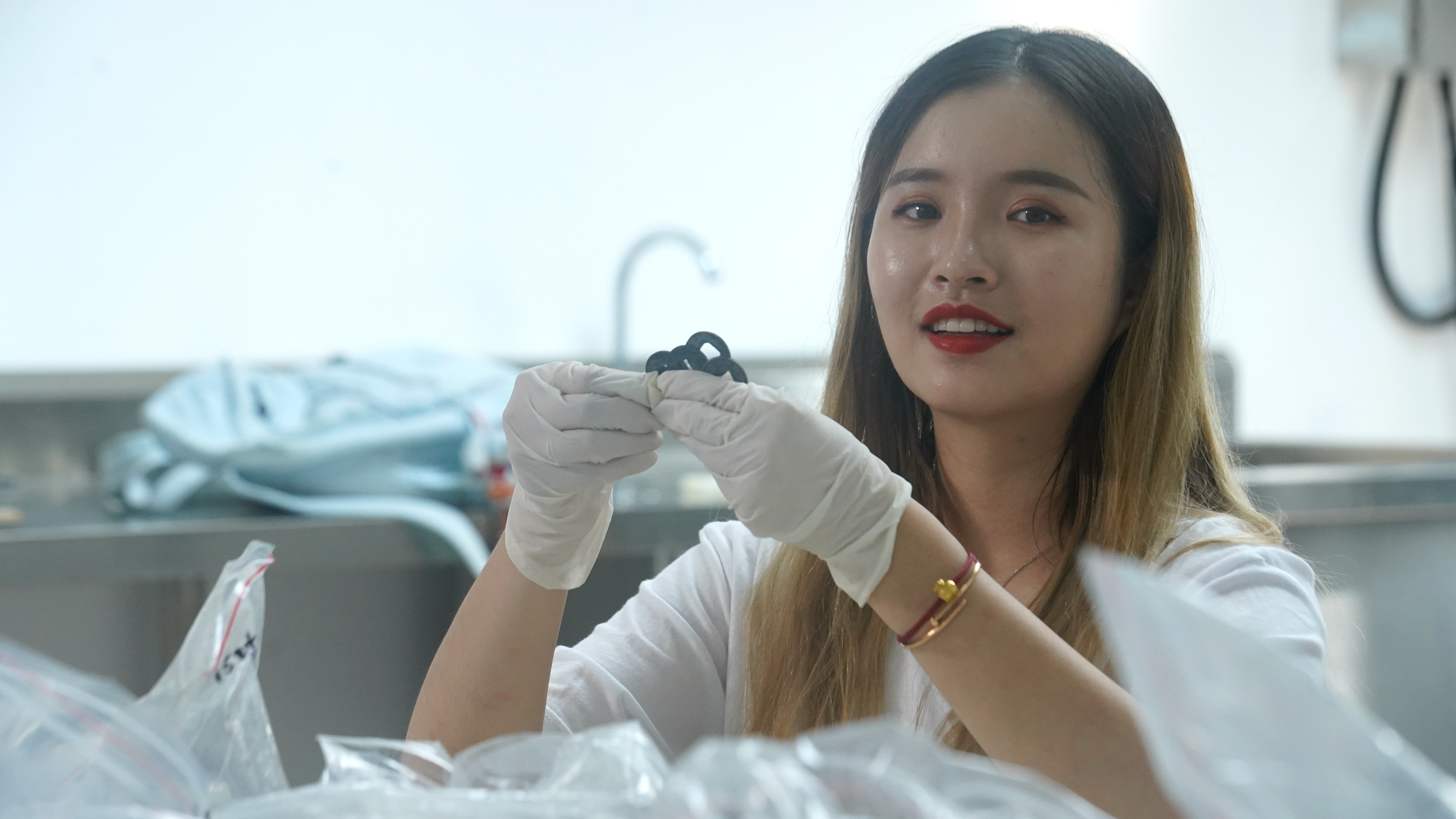04:53

In the previous series, most of our trips covered museums. Accompanied by archaeological experts and curators, we enjoyed our exploration comfortably in an air-conditioned environment.
But this time in Nanchang City, eastern China's Jiangxi Province, I experienced the painstaking process of excavation.
"He is probably the richest tomb owner in our series." The director's words successfully aroused my interest in Marquis of Haihun, Liu He. I was stunned when I saw a mountain of Wuzhu Coin and gold.

Archaeological experts are working at the tomb of Marquis of Haihun in Nanchang, eastern China's Jiangxi Province. /CGTN Photo
Archaeological experts are working at the tomb of Marquis of Haihun in Nanchang, eastern China's Jiangxi Province. /CGTN Photo
Due to the ongoing counting work, several researchers, who are graduates or doctorate students form Peking University, are still busy with counting and differentiating tons of coins as part of their daily work.
The tomb of Marquis of Haihun was discovered in 2011. Considered as the best-preserved royal tomb from the West Han Dynasty, it is still under excavation. The excavation base is around 30-minute driving away from Nanchang City's downtown.

An overlook of the tomb of Marquis of Haihun in Nanchang, eastern China's Jiangxi Province. /CGTN Photo
An overlook of the tomb of Marquis of Haihun in Nanchang, eastern China's Jiangxi Province. /CGTN Photo
"Hot and humid" can't even fully describe the September days in Jiangxi Province. Walking on the carless concrete road in the remote village and soaked in sweat, I thought about how this could be a favorite site for ancient emperors' tombs.
Liu He's tomb has already been dug up, and is now covered with a big shed for protection. Many archaeologists were working on excavating his wife's tomb. I expect an excavation base to be full of mysteries and surprises leading to hidden treasures. However, it was like a boring construction site.

Western Han Golden Cake pattern are displayed on the museum. /CGTN Photo
Western Han Golden Cake pattern are displayed on the museum. /CGTN Photo
I found a wide and deep hole on the site. It was the looted area of his wife's tomb. Her tomb was robbed before archaeologists found it. Liu He's tomb would have suffered the same fate, but the tomb robbers were caught by police. So Marquis of Haihun's tomb was found complete with tons of coins, golds and burial objects.
However, since his wife's tomb is still under excavation, nobody knows how much treasures were left after the robbery.

CGTN reporter Li Yimei is in the Nanchang City, east China's Jiangxi Province. /CGTN Photo
CGTN reporter Li Yimei is in the Nanchang City, east China's Jiangxi Province. /CGTN Photo
Liu He's life was full of twists and turns. Born in royal family, he was once the emperor in Western Han Dynasty. But he was dragged down from the throne after being an emperor for 27 days and was exiled as a marquis.
Despite his misfortune, Liu He evidently succeeded in bringing his imperial wealth and took it to the grave, as his burial goods represented the highest grade of craftsmanship and visual sophistication in Western Han art. Because of his wealth, archaeological work has been greatly burdensome for researchers.
"But it is worthy," a young research who has the same age with me replied me with keen eyes on the excavation base.
Reporter: Li Yimei
Scriptwriter: Li Yimei
Editor: Zhang Ziyu
Copy editors: Katrin Buchenbacher, Vanessa Gu
Chief editors: Chen Ran, Lin Dongwei
Cover image: Yin Yating
Executive producer: Zhang Xiaohe
Producer: Si Nan
Supervisor: Zhang Shilei